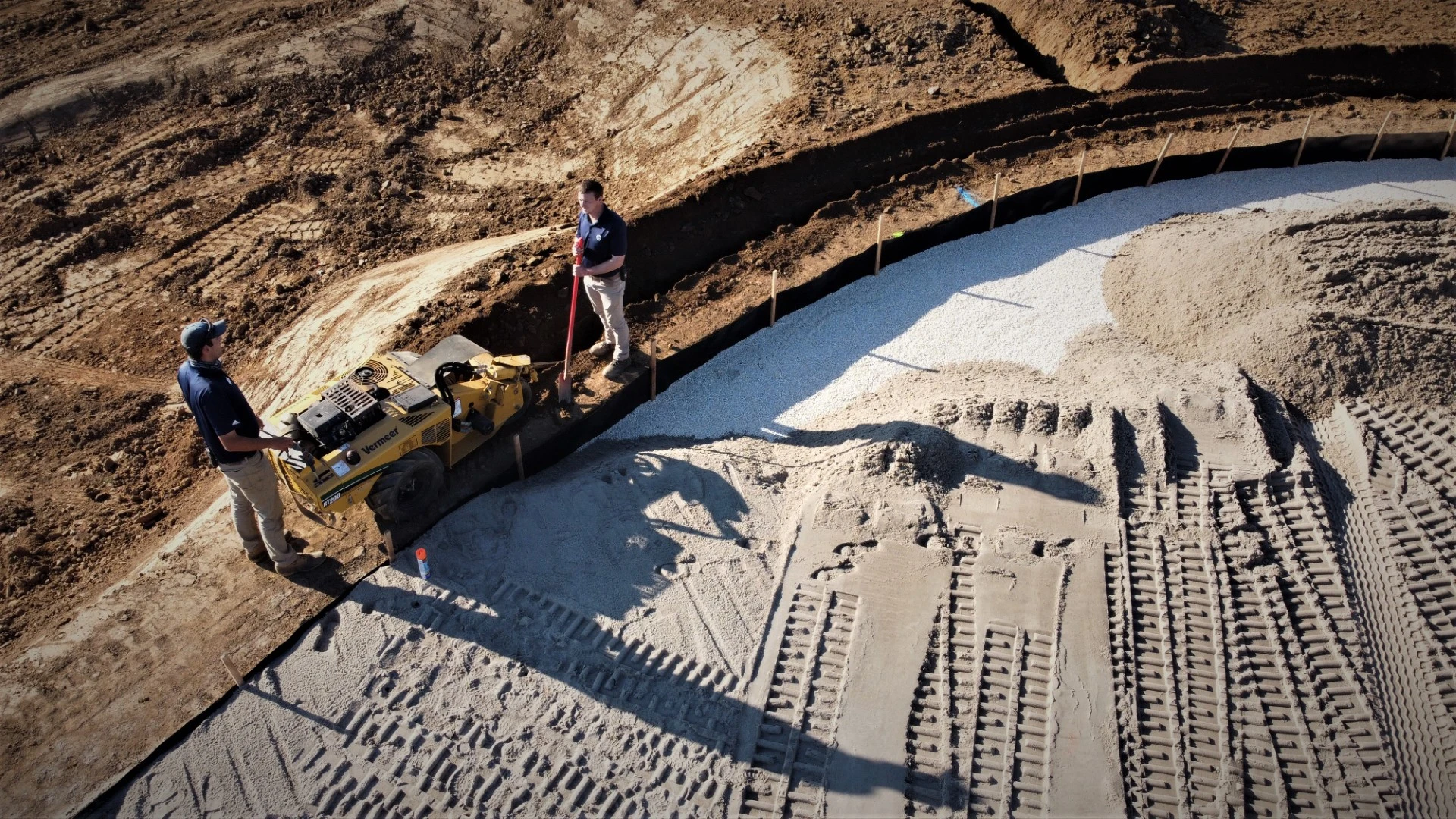
Ricky Robinson (2)
When Cape Kidnappers Golf Course debuted over the high season of 2004-2005, the Tom Doak design was immediately hailed as a modern masterpiece. Its clifftop setting more than nearly 500 feet above Hawkes Bay, the architect’s melding of heathland and links features, were unlike anything in the golfing world.
That’s true still today — perhaps more true than ever, as Cape Kidnappers and Doak have finalized a series of collaborative renovations to mark the resort track’s 20th anniversary. During COVID-19, the architect directed a complete re-grassing of every fairway and putting surface, restoring the bounce and roll that make Doak’s bold features work.
Just in time for high season, which begins this month in the Southern Hemisphere, Doak advised ownership on a range of projects, from the strategic trimming of manuka and kanuka trees, to the expert camouflaging of new cart paths.
“I don’t know how often golf courses go back to the original architect for approval and advice when it comes to renovations, but we do this with Doak all the time,” said Ray Geffre, director of golf at Cape Kidnappers and its sister course, Kauri Cliffs Golf Course, located about 375 miles to the north. “Tom doesn’t do this sort of work for just anyone; he’s never been busier, all over the world.
“But he clearly has a soft spot for this place, maybe because this was his first overseas project. And the terrain is unforgettable. For our part, we are very careful about how the design and this environment are preserved. So we have never hesitated to contact Tom and ask, ‘What do you think?’ or ‘How do we work together to get this done in the best way possible?’ No matter where he is, Tom has never failed to respond.”
As a result, the 18 holes at Cape Kidnappers have never looked or played better. Yet Doak himself believes his first Kiwi design, routinely ranked among the world’s top courses, remains distinct and oddly misunderstood.
“There is nothing quite like it in golf; it just sits so high above the water,” Doak said. “This is a course fairly ranked among the top 50 in the world, but I’ve found people have difficulty classifying Cape Kidnappers in their own minds — because it’s so different and distinct from anything else. … There is nothing comparable in terms of setting and scale. It really does stand alone and may always stand alone. I do have a soft spot for it.”
This latest round of improvements proved both aesthetic and practical. Most of the tree work involved trimming back the manuka and kanuka trees that occupy the deep ravines between holes. At the signature 15th — a par-5 called “Pirate’s Plank” — rampant tree growth had obscured the unique, intimidating sight lines of the fairway, which plays down a finger of ridge to a cliff-edge green.
“Today, it plays like a plank again,” Geffre said.

At the par-3 8th —“Backstop” — shots across a gully were beginning to be affected by manuka and kanuka growing there.
“Tom actually likes the trees at 8. He said something to the effect of, ‘Where else in the world do you tee off OVER trees?’” Geffre said. “We are trying to find a balance, and this is a situation where the trees get the nod to stay — but the height must be maintained. In general, we were concerned that several holes were playing more like a parkland course, and Tom shared that concern.”
The Cape Kidnappers peninsula extends more than six miles from the southeastern extremity of Hawkes Bay into the South Pacific. The golf course and adjacent lodge, Rosewood Cape Kidnappers, occupy a 6,000-acre property ringed by more than six miles of protective fencing — meaning the barrier extends nearly as far below ground as above it, to protect endangered species from predators.
As a result, golfers are treated to flora and fauna unlike any in world golf. Guests at The Farm can partake of Kiwi Discovery walks, Hanging Rock Gorge and all manner of bird tours — the tip of Cape Kidnappers is home to the world’s largest gannet colony. These examples of naturalistic sights and activities only scratch the surface: The Cape Sanctuary is the largest privately owned and funded wildlife restoration project of its kind in New Zealand.
“We take our environmental bona fides very seriously here,” Geffre said, “but we also want to preserve Tom’s course design, the long views of these cliffs, and out over Hawkes Bay. It’s a balance.”
Holes 7 through 10 were the subject of considerably more delicate and diverse tree work. Removal of the mighty cypress that towered beside the 9th green was removed, due to a combination of old age and disease. Doak replaced this non-native species with cavernous grass bunker. He also OKed removal of several non-native grandfather pines on the par-4 10th.
Even the new cart path between 7 and 8 tees got the Doak Stamp of Approval.
“We had decided to go full path on that stretch because it could become impassable or dangerous in wet conditions. We went to Tom on that and told him, ‘Look, we know you don’t like paths, but we have to do this.’ He knows every inch of this place and sure enough, we identified a route behind some manuka, then hid the rest behind the 7th green.”
Get curated news on YOUR industry.
Enter your email to receive our newsletters.
Latest from Golf Course Industry
- Standard Golf announces new product lineup for 2025
- The Salt Pond taps Troon for management
- KemperSports selected to manage Swansea Country Club
- From the publisher’s pen: Grab that guide
- Introducing our April 2025 issue
- South Carolina leaders honor golf course superintendent
- One and only
- Wild can be good





